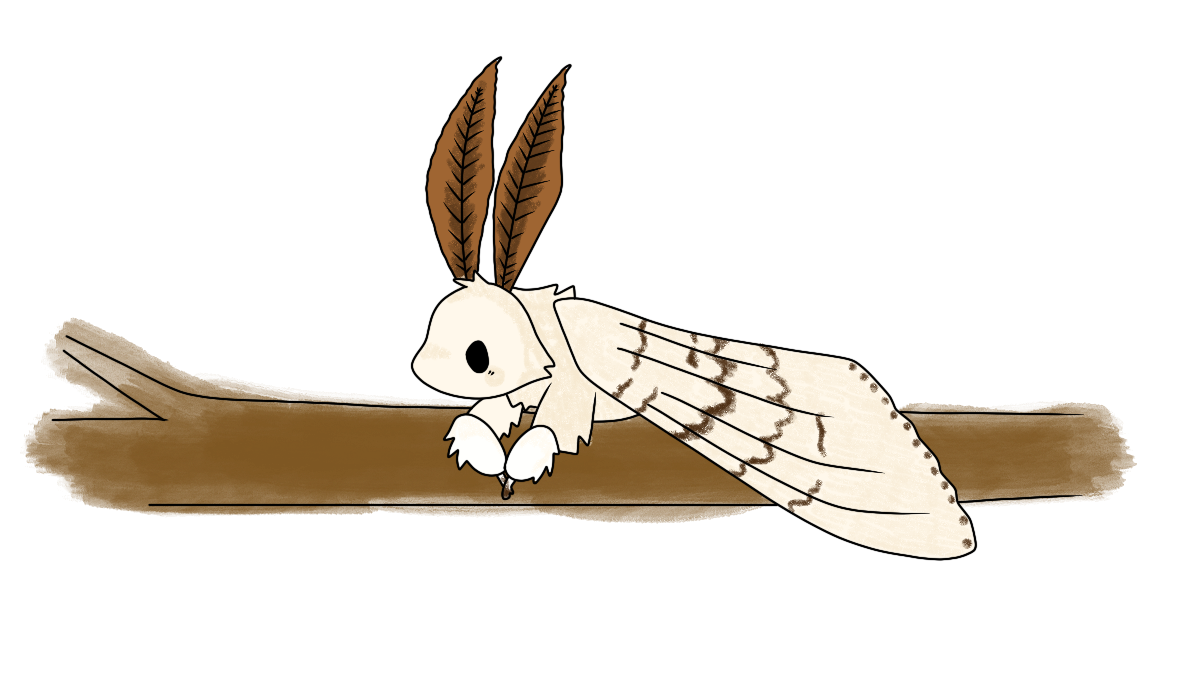Research Expedition: The Spongy Moth aka The Gypsy Moth
I am currently living in Erie, PA for college and we have an invasive insect species that was brought here on purpose! The species is called the European Gypsy Moth.
Getting Here
The Gypsy Moth was brought here by Etienne Leopold Trouvelot in the 1800’s. He had big plans to establish a US based silk company by importing these moths and selectively breeding them to create disease and pest resistant worms who’d produce abundance of silk. However, in his carelessness, a couple of the worms escaped and set up shop in the Northeastern US forests. However, no one knew about their escape for over half a century.
Eating Forests Out of House and Home
As the Gypsy Moth worms began to set up shop in Northeastern forests, mass defoliation began to occur. Entire tree canopies were bare of leaves, foliage on the ground lacked leaves as well. When the worms do begin an outbreak, it looks as though the trees never budded. However, the worms do have a preferred tree: Oak Trees. These outbreaks caused by the Gypsy Moth worms year after year can cause death to many Oak Trees, decimating the local forest ecosystem. The lack of oak trees in Pennsylvania can lead to many insects and other wildlife losing their homes and sources of food. Though this would happen to any ecosystem the worms set up shop in, as a lack of any part of the ecosystem can throw the whole community out of balance.
Monitoring the Worms
In 1968, after an increase in the devastation by the worms, the Beurre of Forestry set up a division to monitor the worms and keep them from having mass outbreaks. Though it is difficult to truly monitor and grasp an insect’s population, the Beurre of Forestry has teams scout out Gypsy Moth eggs and count them to get a loose estimate of the future and current populations. With this information they are able to determine which areas are high risk and need to be treated either immediately or within the following years. In 1972 the first of these treatments was implemented and more that 25,000 acres of forest was sprayed to rid the ecosystem of these pests. The treatment worked, and the Beurre continued its efforts, only spraying when needed (as these bug killers can harm native insects and wildlife). In recent years a fungus that only impacts the health of the Gypsy Moth was discovered and aided in the decrease in the Moth’s population.
Last year (2022) the DCNR needed to spray over 200,000 acres of land to get rid of the Gypsy Moth population. Citizens of PA were advised to learn what the Gypsy Moth catepillars and Moths look like so they can be killed on sight. Below is the instructions for killing eggs and the moths:
Scrape all Gypsy Moth eggs into a bucket or container and dispose of them by destroying the eggs. Otherwise, when they are a Moth or Larva, just squish them.
Appearance
Gypsy Moths Adults are white or brown in appearance, with fuzzy heads, and small black markings that are either dots on the tips of the wings, or brownish waves across the wing body. The caterpillar stage of the Gypsy Moth looks like an average caterpillar. However, it will have red dots where the fur comes out of the body.
After researching I learned that the Gypsy Moth recently had a name change. They are now called Spongy Moths.
Sources for Information
https://www.eriereader.com/article/invasive-species
https://www.dcnr.pa.gov/GoodNatured/Pages/Article.aspx?post=163
Images (TW for bugs, the last one is a lot of catterpillars).
https://www.entsoc.org/sites/default/files/2022-02/spongy-moth-lymantria-dispar-adult-larva.png
Submitted By Eosintis
for Research Expedition
Submitted: 2 years ago ・
Last Updated: 2 years ago
